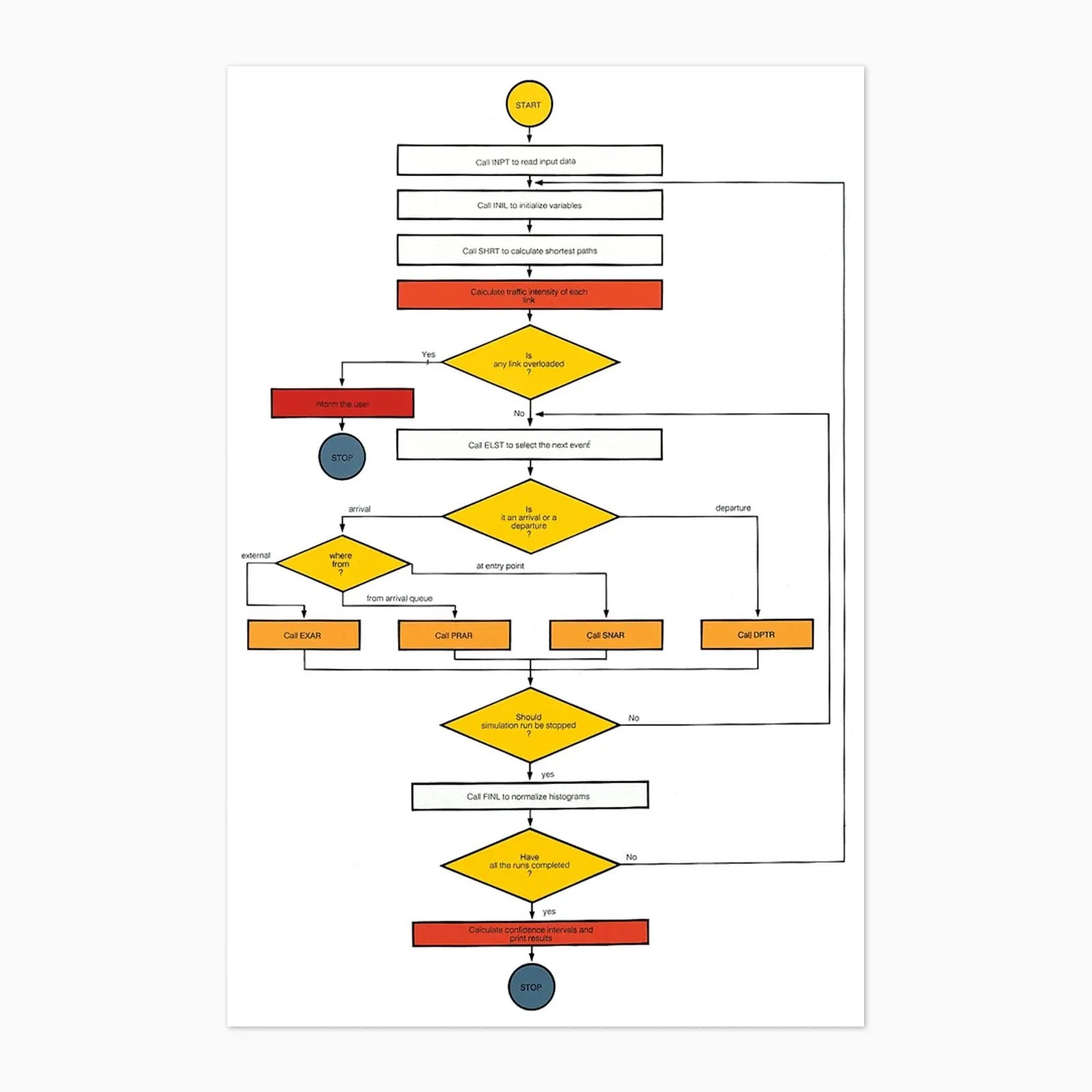




Peter Halley - Organizational Charts
VAT not deductible (Margin Scheme).
Peter Halley (American, born 1953)
Organizational Charts, 1990
Medium: Portfolio of four silkscreens on mylar
Dimensions sheet 1, Is it an Arrival or a Departure?: 83 x 57 cm
Dimensions sheet 2, Final Attributes: 62 x 68.5 cm
Dimensions sheet 3, Limited Partners: 58.5 x 77.5 cm
Dimensions sheet 4, Station, Cell, Factory: 50 x 71.5 cm
Edition of 50: Each hand signed and numbered
Condition: Mint
Artwork details
Peter Halley’s Organizational Charts (1990) is a portfolio of four silkscreens on mylar that reimagine corporate and bureaucratic flowcharts as abstract compositions. Exploring the intersection of geometry and social structures, Halley reflects on the systems of control and communication that organize modern life. With vibrant colors, grids, and interconnected forms, the works convey the complexity of corporate, institutional, and technological frameworks while critiquing their often impersonal and mechanized nature. By transforming diagrams into visual metaphors for power dynamics and hierarchies, Halley exposes the structures that govern our daily existence. This rare edition of 50 is hand-signed and numbered, marking it as a significant collector’s portfolio within Halley’s practice.
About this artist
Peter Halley is a contemporary painter, printmaker and writer, best known for his brightly colored, geometrically structured paintings. Being associated with Minimalism and Color Field Painting, he is mainly recognized for his contributions to the Neo-Conceptualist movement of the 1980s. Alongside fellow neo-conceptualists such as Annette Lemieux, Jeff Koons and Sarah Charlesworth, Halley both highlighted and critiqued the roles that technological and physical forces play in an increasingly commodity-driven society. Inspired by New York’s gridded urban plan and his isolation within it, Peter Halley set out to use the language of geometric abstraction to describe the actual geometricized space around him. Apart from urban spaces, his paintings and prints explore geometry through the synthesis of grid structures inspired by digital code systems such as the Internet or circuit diagrams. “Space became geometrically differentiated and partitioned. Circulatory pathways, the omnipresent straight lines of the industrial landscape, were established to facilitate orderly movement,” he wrote. As his minimalist peers, Peter Halley created his artwork with industrial materials, such as Roll-a-Tex, a textured paint used for decoration, fluorescent Day-glo paints or sand. What distinguishes Halley’s geometrical forms from Minimalism, however, is their underlying commentary on physical isolation and digital connectivity of contemporary life. Imagining abstract shapes as barred prison cells connected to the outside world through electronic communication only, he explains his art as a play of relationships between “prisons” and “cells”. Alongside his career as an acclaimed artist, Peter Halley has written various critical theory essays, including “Beat, Minimalism, New Wave, and Robert Smithson” from 1981 and co-founded “Index” magazine in 1996. His artworks are held in numerous major museum collections, including the Museum of Modern Art, New York; Tate Modern, London; and the Art Institute of Chicago. Peter Halley was born in New York City in 1953.

You may also like

Buy art online
Shop art editions online with transparent pricing, accurate condition reports, and fast dispatch. Designed for international collectors, we make buying limited edition prints and artworks simple, secure, and reliable.
Worldwide shipping
We ship art editions worldwide with full insurance and tracking. Handled only by trusted international carriers, each shipment is securely packaged and typically dispatched within 5 days.
Professional packaging
Every artwork is packaged to the highest professional standards. Using solid multi-layer cardboard and protective materials, we ensure your art editions arrive safely and in excellent condition.
Secure payment
Buy with confidence using secure, encrypted payments backed by advanced fraud protection. Every transaction is processed with trusted technology, ensuring a smooth and worry-free checkout for collectors worldwide.


















